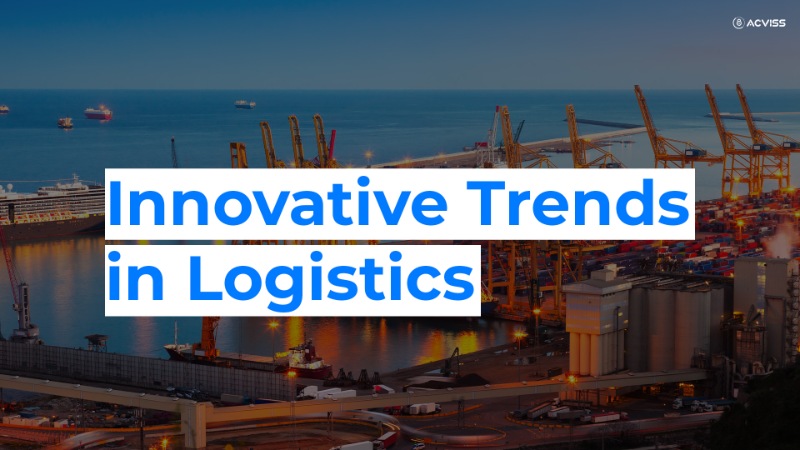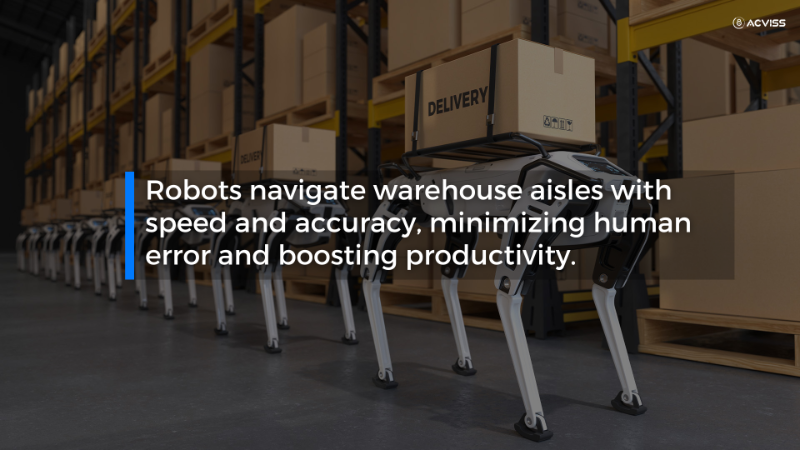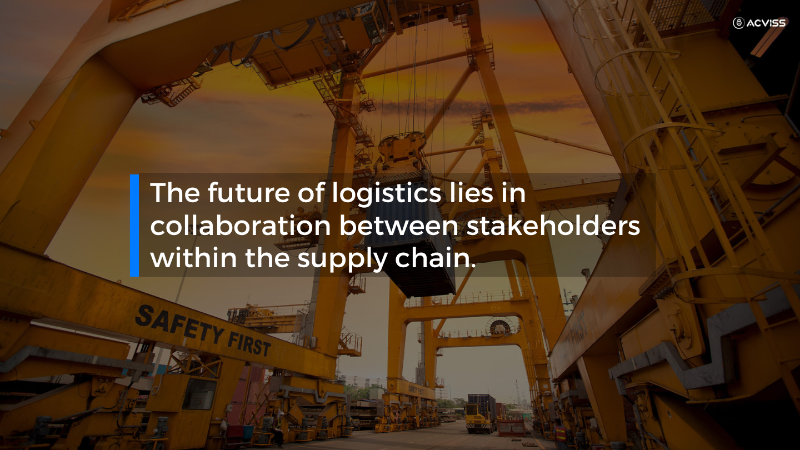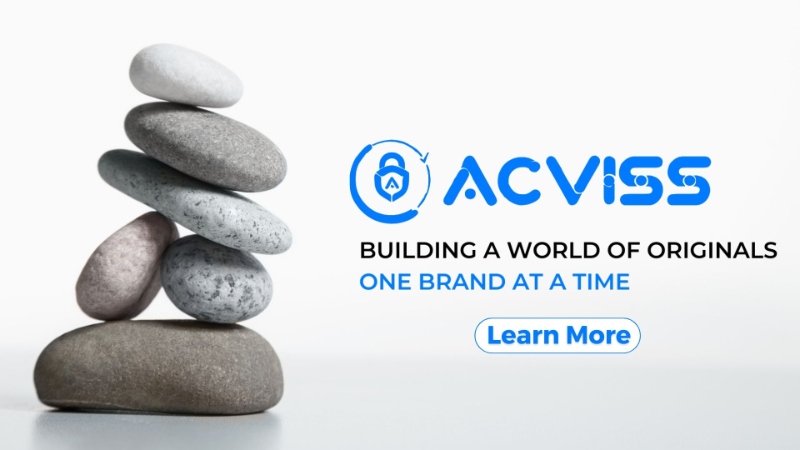A Deep Dive into Innovative Supply Chain Logistics Trends in 2024

The innovations in the logistics industry are taking brand protection and supply chain traceability into a new phase. But is it possible to integrate intelligent systems to facilitate a flawless supply chain?
The winds of change are blowing across the logistics landscape, propelled by a tidal wave of technological advancements and evolving customer expectations. The global logistics market size reached a value of almost USD 10.59 trillion in 2023 and is expected to grow at a CAGR of 6.3% between 2024 and 2031. Adapting and innovating to meet the changing needs and challenges of the market and society is a necessity not just for supply chain management but for the well-being of the entire world.
Let’s see what are the key trends and innovations that will impact the logistics industry in 2023 and beyond.
Contents
1. Automation:
Gone are the days of monotonous manual labour dominating warehouse floors and transportation routes. The era of hyper-automation has arrived, with robots and AI taking centre stage in streamlining repetitive tasks. This includes:
Automated Picking and Packing Systems: Robots navigate warehouse aisles with precision, picking and packing orders with unparalleled speed and accuracy, minimizing human error and boosting productivity.
Driverless Trucks: These autonomous vehicles are taking to the highways, transporting goods efficiently and safely while reducing human fatigue and the risk of accidents.
Drones for Last-Mile Delivery: Soaring through the skies, drones are revolutionizing last-mile delivery, offering faster delivery times and reaching previously inaccessible areas. Amazon is at the forefront of making drone delivery a reality. Followed by Walmart, Uber Eats and even Zomato have completed their test delivery using drones.
2. AI-Driven Efficiency:
Machine learning algorithms are evolving into logistics' guiding light, optimizing every aspect of the process. AI in supply chain systems tackle:
Route Planning and Scheduling: AI analyzes real-time traffic data and driver availability, generating the most efficient routes and schedules, saving time and fuel while optimizing delivery times.
Predictive Maintenance: By analyzing sensor data from equipment, AI predicts potential failures before they occur, allowing for proactive maintenance and minimizing downtime.
Demand Forecasting: Historical data and current trends analysis helps AI to anticipate fluctuations in demand, enabling businesses to optimize inventory levels and avoid stock shortages or overstocking.

3. Supply Chain Transparency:
Ever since the pandemic, the supply chain has been undergoing drastic changes to overcome the new age problems. And one of the best solutions to the majority of the problems is to bring transparency into the process. Exactly where Blockchain technology emerges as a game-changer, enabling visibility of the shipment across the supply chain guaranteeing:
Secure Tracking: Goods can be tracked in real-time throughout their journey, providing complete transparency and accountability and reducing the risk of fraud and theft. Track and trace solution powering blockchains such as Origin allows you to get un-hindered insights into product movement giving you an even better chance to avoid supply chain-related issues and other threats to your brand.
Enhanced Provenance: Consumers gain valuable insights into the origin location and journey of their products, fostering trust and promoting sustainable practices.
Collaboration and Efficiency: Secure data sharing across the supply chain empowers stakeholders to collaborate effectively and optimize workflows.
4. Sustainable Logistics:
Environmental consciousness is no longer a trend, but a necessity. Rising climate change worries have pushed the government to impose stringent policies. Logistics companies have already started embracing sustainable practices, including:
Electric Vehicles: Transitioning from fossil-fuel-powered vehicles to electric trucks, vans and even drones significantly reduces carbon emissions, promoting cleaner air and a healthier planet.
Exploring Alternative Fuels: Biofuels and hydrogen are being explored as cleaner and more sustainable alternatives to traditional fuels, further reducing the environmental impact of transportation.
Optimizing Routes and Packaging: Utilizing AI-powered route planning and implementing sustainable packaging solutions minimize fuel consumption and waste, contributing to a greener future.

5. Last-Mile Delivery:
Customers crave fast, flexible and convenient delivery options. Logistics companies are responding with innovative solutions, such as:
Micro-Fulfillment Centers: These smaller, strategically located warehouses bring inventory closer to customers, enabling faster delivery times and reducing last-mile delivery costs.
Crowd-Sourced Delivery Platforms: Leveraging a network of independent drivers offers a flexible and cost-effective solution for last-mile delivery, catering to fluctuating demand.
Smart Lockers: Providing secure and convenient locations for package pick-up empowers customers with greater control over their deliveries, further enhancing convenience.
6. The Rise of Elastic Logistics:
The traditional "one-size-fits-all" approach is becoming obsolete. Businesses need to be agile and adaptable to thrive in today's dynamic market. Enter elastic logistics:
Cloud-Based Platforms: These platforms offer scalability and flexibility, allowing businesses to quickly adjust their operations based on changing demand and market conditions.
On-Demand Resources: Accessing temporary labour and equipment on an "as-needed" basis enables companies to optimize resource allocation and avoid unnecessary costs.
Dynamic Route Planning: AI-powered systems constantly monitor and adjust delivery routes in real time, accounting for traffic disruptions and unexpected events, ensuring efficient and timely deliveries.
7. Leveraging Predictive Analytics:
Data is no longer just a collection of numbers; it's a powerful tool for predicting future trends and events. Predictive analytics is transforming logistics planning by:
Proactive Risk Management: Identifying potential risks and disruptions before they occur empowers companies to take preventative measures, minimizing their impact and ensuring business continuity.
Personalized Customer Experiences: Businesses can personalize their delivery options and communication by analysing customer data, building stronger relationships and enhancing customer satisfaction

8. The Digital Twins:
Digital twins are virtual replicas of physical assets and processes, offering a powerful tool for logistics optimization:
Virtual Warehousing: Simulating warehouse operations in a digital environment allows for precise planning and optimization of layout, inventory placement and workflow, maximizing efficiency.
Predictive Maintenance: Sensors embedded in physical assets feed data into the digital twin, enabling engineers to predict potential failures and schedule maintenance before they occur.
Testing New Technologies: Implementing new technologies in a virtual environment minimizes risk and allows for testing and refinement before applying them to real-world operations.
9. The Collaborative Future of Logistics:
The future of logistics lies in collaboration and breaking down silos between stakeholders within the supply chain. Innovative technologies like:
Open Data Platforms: Enabling secure data sharing across the supply chain fosters transparency and collaboration, leading to better decision-making and optimised workflows.
Collaborative Planning, Forecasting and Replenishment (CPFR): This approach involves integrating planning and forecasting processes across all supply chain partners, ensuring better inventory management and reduced risk of shortages.
Blockchain-Based Trade Finance: Blockchain technology facilitates secure and transparent financing transactions, streamlining cross-border trade and improving cash flow for businesses.

10. The Human Factor:
While technology is revolutionizing the industry, human expertise remains invaluable. The supply chain is still under the threat of labour shortages since the COVID-19 pandemic. However, things seem to have taken a better turn in 2023. And it is becoming imperative that human capital also needs to adapt to the changing trends in the industry.
Upskilling and Reskilling the Workforce: Equipping employees with the skills and knowledge needed to thrive in the new era of automated and data-driven logistics.
Shifting Focus to Value-Added Activities: As automation handles routine tasks, employees can focus on higher-level activities like strategic planning, customer service and problem-solving.
Fostering a Culture of Innovation: Encouraging a culture of experimentation and collaboration among employees is crucial for continuous improvement and adaptation in the ever-evolving logistics landscape.
A Secure Future
Ever since online shopping has taken centre stage, the physical borders among marketplaces are slowly fading away. Adding even more hurdles to an already challenge-rich industry. The transformation into a complete digital system is not only a giant opportunity to make the SCM flexible and sustainable but also a bigger boost in securing the integrity and transparency of the supply chain.
Want to know more about supply chain, transparency and brand protection? Head over to www.acviss.com to learn more or get in contact with us to know how we can get your supply chain secured.

Frequently Asked Questions
1. What is logistics in simple words?
Logistics is the process of planning, implementing and controlling the efficient movement and storage of goods, services and information from the point of origin to the point of consumption to meet customer requirements.
2. What is the latest technology in logistics?
The latest technology in logistics includes automation with robots and AI for tasks like picking and packing, driverless trucks for transportation, and drones for last-mile delivery. AI-driven efficiency, Blockchain for supply chain transparency and sustainable practices like electric vehicles are also prominent.
3. What is the role of supply logistics?
Supply logistics involves managing the movement and storage of goods from the point of origin to the final destination efficiently, ensuring a smooth and cost-effective supply chain process.
4. What is the difference between supply chain management and logistics?
Supply chain management encompasses the entire process from raw material to the end consumer, including planning and coordination. Logistics is a subset focused on the physical movement and storage of goods within that broader supply chain.